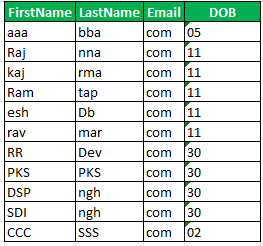ASP.NET is a Web application framework developed
by Microsoft to build dynamic data driven Web applications and Web
services. using HTML, CSS and JavaScript. Moreover, it is a technology for
developing, deploying, and running Web applications. ASP.NET is a part of the
Microsoft .NET Framework, so all .NET Framework features are available to
ASP.NET applications. That means, when you developing ASP.NET applications you
have access to classes in the .NET Framework because .NET framework is a
collection of classes and ASP.NET is the successor to classic
ASP (Active Server Pages).
ASP.NET
introduces entirely a new object-oriented execution model. In order to overcome
the limitations of ASP (Active Server Pages) , Microsoft has developed a new
technology called Microsoft ASP.NET
ASP.NET
is built on the Common Language Runtime (CLR), allowing programmers to write
ASP.NET code using any supported .NET languages like VB.NET and C#. Unlike the
ASP runtime, ASP.NET uses the Common Language Runtime (CLR) provided by the
.NET Framework. The Microsoft .NET Platform provides all of the tools and
technologies that are needed to build distributed Web applications. ASP.NET is
integrated with Visual Studio .NET, which provides a GUI designer, a rich
toolbox, and a fully integrated debugger. In ASP.NET, you can write the HTML
code in the .aspx file and the code for programming logic in the code-behind
file (.aspx.vb or .aspx.cs ). Also ASP.NET introduces two sets of controls, the
HTML controls and the Web controls, which are collectively known as
"server controls."
What
is a Web Application?
A web application is an application that is accessed by users using a web browser. Examples of web browsers include
1. Microsoft Internet Explorer
2. Google Chrome
3. Mozilla FireFox
4. Apple Safari
5. Netscape Navigator
A web application is an application that is accessed by users using a web browser. Examples of web browsers include
1. Microsoft Internet Explorer
2. Google Chrome
3. Mozilla FireFox
4. Apple Safari
5. Netscape Navigator











